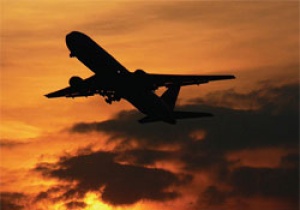Aviation to come under spotlight at Arabian Travel Market

Aviation sector experts and commentators will gather in Dubai for the 20th annual Arabian Travel Market exhibition next month as the industry comes under close scrutiny at dedicated sessions as part of the overall ATM 2013 seminar series.
Kicking off the debate, two of the giants of aviation will take part in The Big Conversation on the first day of the show, with Emirates Airlines president, Tim Clark, and Qantas chief executive, Alan Joyce, discussing their groundbreaking partnership.
A Euromonitor-led presentation at the WTM Vision seminar on May 7th, will share the results of research into the opportunities for growth by low cost airlines in the Middle East.
Another aviation outlook session, focusing on the challenges and opportunities, will feature Ghaith Al Ghaith, chief executive, flydubai; Aage Dünhaupt, director, group communications south-east Europe, Middle East & Africa, Lufthansa; and Randy Tinseth, vice president, marketing, Boeing Commercial Airlines.
Building on the momentum, Sunil Malhotra, director aviation sector, Middle East & North Africa for Ernst & Young, will present the latest industry findings and a ten-year outlook with a session entitled ‘Looking to the skies: global aviation trends 2013 – 2033’ on the afternoon of May 8th.
“The last three years have seen the global aviation industry turn a corner despite ongoing market turbulence.
“While consolidation is the strategy in North America, and European carriers are busy lobbying for an end to excessive taxation and passenger duties, the Middle East and Asia are capitalising on both route network growth opportunities and strong passenger demand,” said Mark Walsh, portfolio director, Reed Travel Exhibitions.
According to IATA, global airline sector profit will grow from -$US4.6 billion in 2009 to a forecast figure of US$7.5 billion for 2013 with Asia Pacific and Middle East based airlines dominating the international passenger market and leading the way in terms of improved operating margins.
“The aviation industry has grown by 53 per cent since 2000 despite the impact of SARS, the global financial crisis and regional conflicts.
“The world passenger growth in air traffic is recoded at five per cent per annum by ICAO scheduled traffic analysis since 1980,” said Malhotra.
“According to the report, Asia-Pacific will lead world traffic by 2031, with a 32 per cent share, while the Middle East will rise to 11 per cent in 2031 from the current figure of seven per cent.
“The future forecasts over the next 20 years for the world GDP growth as per IMF is at 3.2 per cent per annum and based on ICAO forecasts, the number of airline passengers is projected to grow at four per cent with airline traffic growth outlined to grow at five per cent per annum.”
Partnership activity is a major focus of the report as airlines are proactively seeking for more meaningful alliances and partnerships to boost their synergies and passenger flows.
“Some of the Gulf carriers are joining global alliances, whilst others have entered into strategic code shares to promote traffic flows between continents.
“Airlines are now planning to evaluate aggressively dormant partnerships and look at creating a cohesive air charter for organic growth,” said Malhotra.
However, he points out that despite consolidation and new alliances, the industry is facing a highly competitive environment, which continues to weigh down airline profitability and return on capital, with it unlikely to catch up with cost of capital in the near future.
“Facing future uncertainty in a risk-laden market, legacy carriers are also scrambling to find a model that works, with a refocus on short haul routes, development of LCC’s and re-evaluation of their long-haul networks,” added Malhotra.

